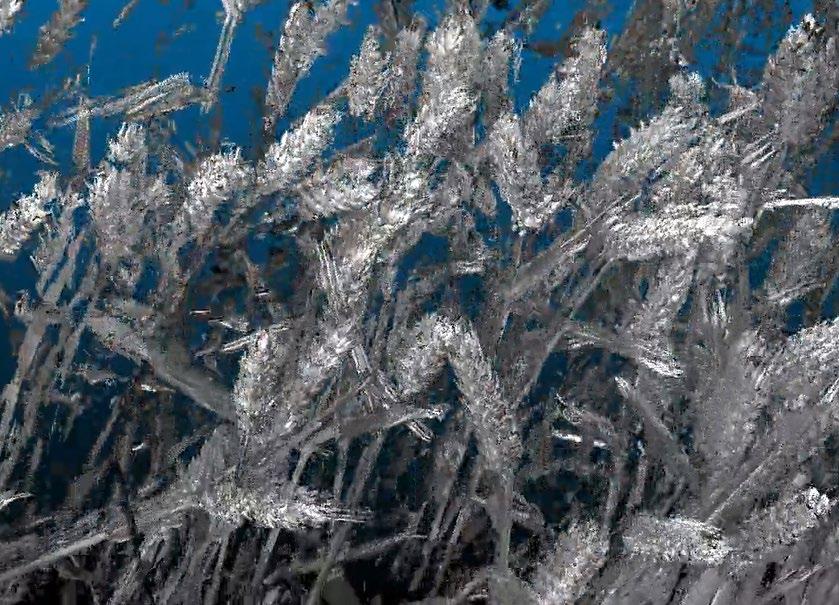
4 minute read
3D MACHINE VISION
HELPS BREED NEW WHEAT CROP VARIETIES
Andrea Pufflerova of Photoneo explains how the UK’s National Physical Laboratory will use 3D machine vision in crop growing to feed future generations.
Advertisement
It is beyond dispute that one of the most pressing challenges the world faces today is to find ways to feed the ever-growing population in a sustainable way. Experts agree that crop yields will need to boost by 70 per cent to feed the population by 2050. Seed producers therefore endeavour to come up with the next variety of “Super Seed” that would tackle these concerns for future global food supply.
The traditional, manual method of capturing and analysing crop phenotype data is very time consuming and does not always provide all the information that is needed. Automation of this process therefore becomes absolutely necessary and presents a big step forward, opening up completely new possibilities for crop breeding programs. Wheat is the most widely grown crop in the world and one of the pillars of global food grain crop supply.
Currently, the average wheat yield is about 13 tons per acre but with the expanding population, this number will necessarily need to rise. The National Physical Laboratory in the UK has developed 3D crop scanning technology to address these concerns. The technology aims to automate and improve the process of collecting and analysing crop phenotype data which is then used for breeding new crop varieties.
DATA COLLECTION AND ANALYSIS
Each year seed producers send their wheat seed samples to be graded. Based on the results, farmers decide which seeds to purchase for next year’s planting. To create a better variety of wheat, seed producers use phenotype data to guide their crossbreeding programs. The four basic factors that indicate the quality of wheat and how much a particular seed variety could yield are the ear length, ear height, volume, and the number of spikelets (grains per ear). This data is currently collected manually, using a ruler. However, this is very time consuming as the measurements need to be conducted across hundreds of field plots. The data might not be completely accurate as it is being taken from manual measurements and pictures. The method developed by the National Physical Laboratory uses a 3D scanner and point cloud analysis and promises much better results and benefits in terms of time reduction and cost savings.
AUTOMATION TAKES THE LEAD

A wheeled rig equipped with Photoneo PhoXi 3D Scanners promises much better results than the traditional, manual methods of wheat crop phenotype data collection.
The NPL uses a wheeled rig equipped with a number of 3D imaging techniques. One of them is structured light technology deployed in PhoXi 3D Scanners. These scanners, produced by the Slovak company Photoneo and supplied by Multipix Imaging in the UK, are mounted on the rig construction to capture the scene within the frame in three dimensions, with a turnaround speed of 30 seconds. The standard sample area comprises two by five metres. The scanners provide point cloud information with millimetre resolution and incredible details of the individual grains. This information is then processed in MVTec’s Halcon imaging software with proprietary algorithms.
Point cloud: A point cloud obtained from the PhoXi 3D Scanner, featuring wheat crops in millimetre resolution.

The NPL opted for the PhoXi 3D Scanners XL based on its high scanning accuracy and resolution - they are able to capture up to 3.2 million 3D points for each scan - as well as its robustness. As the plants need to be observed in their natural outdoor habitat, the scanners need to reliably work under varying light conditions, from bright sunshine to overcast skies. At the same time, they are robust enough to be resistant to dust and harsh movements when attached to the rig pulled by a tractor.
ON THE WAY TO A “SUPER SEED”
The new technology provides farmers with far more data than the traditional methods, enabling them to make better decisions about their crops. Farmers can see in detail how the crops are growing, if they need more water or fertilizer, and information on when to harvest. Therefore, farmers are able to control the whole process of supply and maximise what they get from the field.

Dr Richard Dudley, a science area leader for electromagnetics, 5G, and precision farming at the National Physical Laboratory, said: “We can image what’s growing in fields and help seed growers and plant growers come up with the next variety of plant.
“We’re just observing plants in their total natural habitat and picking up the ones that have the best yield and are also more tolerable to disease and drought, which is helping to find the best crops and have the best nutritional value for people.”
This new method of crop phenotype data analysis is also beneficial to consumers. With climate changes, growing conditions have become more challenging, which naturally leads to an increasing cost of food.
“We can help develop crops that are more tolerant of the harsh environments and changeable weather - we can keep the cost low which is really key for the globe,” added Dudley.
The crop breeding trials will start this summer when Dudley’s team will be going out to customers and measure their field plots. MV



